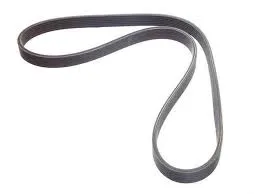- Arabic
- French
- Russian
- Spanish
- Portuguese
- Turkish
- Armenian
- English
- Albanian
- Amharic
- Azerbaijani
- Basque
- Belarusian
- Bengali
- Bosnian
- Bulgarian
- Catalan
- Cebuano
- Corsican
- Croatian
- Czech
- Danish
- Dutch
- Afrikaans
- Esperanto
- Estonian
- Finnish
- Frisian
- Galician
- Georgian
- German
- Greek
- Gujarati
- Haitian Creole
- hausa
- hawaiian
- Hebrew
- Hindi
- Miao
- Hungarian
- Icelandic
- igbo
- Indonesian
- irish
- Italian
- Japanese
- Javanese
- Kannada
- kazakh
- Khmer
- Rwandese
- Korean
- Kurdish
- Kyrgyz
- Lao
- Latin
- Latvian
- Lithuanian
- Luxembourgish
- Macedonian
- Malgashi
- Malay
- Malayalam
- Maltese
- Maori
- Marathi
- Mongolian
- Myanmar
- Nepali
- Norwegian
- Norwegian
- Occitan
- Pashto
- Persian
- Polish
- Punjabi
- Romanian
- Samoan
- Scottish Gaelic
- Serbian
- Sesotho
- Shona
- Sindhi
- Sinhala
- Slovak
- Slovenian
- Somali
- Sundanese
- Swahili
- Swedish
- Tagalog
- Tajik
- Tamil
- Tatar
- Telugu
- Thai
- Turkmen
- Ukrainian
- Urdu
- Uighur
- Uzbek
- Vietnamese
- Welsh
- Bantu
- Yiddish
- Yoruba
- Zulu
იან . 01, 2025 05:35 Back to list
Understanding the Causes and Solutions for Slipping Drive Belts
Understanding Drive Belt Slipping Causes, Effects, and Solutions
Drive belts are crucial components in various machinery and vehicles, serving the vital function of transferring power from the engine to different parts of the system. These belts are designed to operate under high tension and significant stress, which can sometimes lead to a condition known as drive belt slipping. This article explores the causes and effects of drive belt slipping, as well as potential solutions to mitigate this issue.
What is Drive Belt Slipping?
Drive belt slipping occurs when the belt fails to maintain proper contact with the pulleys it is designed to engage. This loss of traction can disrupt the transmission of power, leading to a decrease in the efficiency of the machine or vehicle. While drive belts are made from durable materials engineered to withstand wear, conditions that lead to slipping can compromise their effectiveness.
Causes of Drive Belt Slipping
1. Worn or Damaged Belts Over time, drive belts can become worn, cracked, or frayed due to regular use. This deterioration can reduce their grip, increasing the likelihood of slipping.
2. Incorrect Tension Proper tension is crucial for optimal performance. A belt that is too loose can slip off the pulleys, while one that is too tight may cause excessive wear or even break.
3. Misaligned Pulleys If the pulleys are not aligned correctly, the belt may not sit properly, leading to uneven wear and increased chances of slipping.
4. Contaminants Oil, grease, and other contaminants can accumulate on the belt, decreasing friction and causing it to slip. This can occur in various environments, particularly in industrial settings where machinery is exposed to such substances.
5. Temperature and Environmental Conditions Extreme temperatures can affect the elasticity and strength of the drive belt. Both heat and cold can cause the material to expand or contract, altering its ability to grip the pulleys effectively.
6. Excessive Load Overloading the system can place undue stress on the drive belt, potentially causing it to slip. This is especially relevant in machinery where heavy loads are frequently handled.
Effects of Drive Belt Slipping
The implications of a slipping drive belt can be significant, affecting both performance and safety
. Some potential consequences includedrive belt slipping

- Reduced Efficiency When a belt slips, it fails to transmit power effectively, leading to reduced performance of the engine and associated components. This can ultimately decrease fuel efficiency and increase operating costs.
- Increased Wear on Components Slipping can lead to uneven wear on the drive belt itself and other connected parts. This not only shortens the lifespan of these components but may also lead to more frequent repairs.
- Risk of Breakage A slipping belt is more likely to break, which can lead to unexpected downtime and potentially hazardous situations, especially in industrial applications where machinery ceases to function suddenly.
- Temperature Variations Slipping can generate excess heat, which may damage the belt or surrounding components, exacerbating wear and leading to further mechanical issues.
Solutions to Prevent Drive Belt Slipping
Preventing drive belt slipping involves regular maintenance and adherence to best practices, including
1. Regular Inspections Frequently check the condition of drive belts for signs of wear, cracks, or damage. Early detection can help avoid more significant issues.
2. Ensuring Proper Tension Always maintain the correct tension on the drive belt according to the manufacturer's specifications. Adjusting tension can help prevent slippage while ensuring optimal performance.
3. Regular Cleaning Keep the drive belts clean and free of contaminants. If necessary, use appropriate cleaning solutions to maintain grip and performance.
4. Aligning Pulleys Ensure that all pulleys are correctly aligned. Misalignment can cause serious operational issues, including slipping.
5. Monitor Load Capacity Be aware of the load capacity of your equipment, and avoid exceeding it to prevent undue stress on the drive belt.
In conclusion, understanding drive belt slipping, its causes, effects, and prevention strategies is essential for anyone working with machinery and vehicles. By implementing preventative measures and maintaining regular checks, operators can ensure the longevity and performance of their systems, ultimately leading to greater efficiency and safety.
-
Korean Auto Parts Timing Belt 24312-37500 For Hyundai/Kia
NewsMar.07,2025
-
7PK2300 90916-T2024 RIBBED BELT POLY V BELT PK BELT
NewsMar.07,2025
-
Chinese Auto Belt Factory 310-2M-22 For BMW/Mercedes-Benz
NewsMar.07,2025
-
Chinese Auto Belt Factory 310-2M-22 For BMW/Mercedes-Benz
NewsMar.07,2025
-
90916-02660 PK Belt 6PK1680 For Toyota
NewsMar.07,2025
-
drive belt serpentine belt
NewsMar.07,2025

